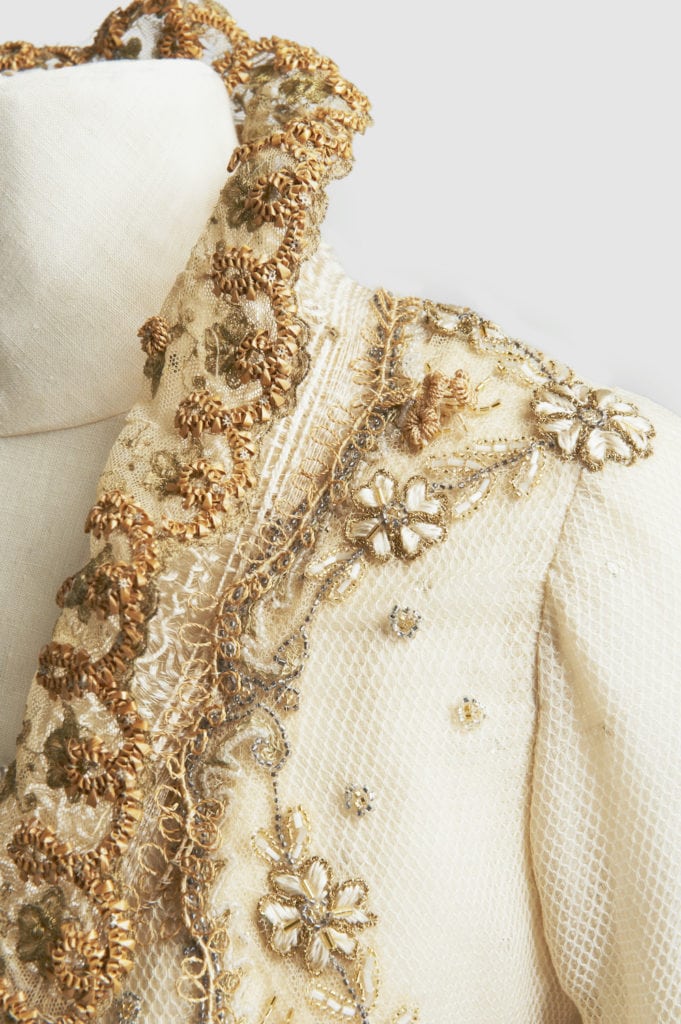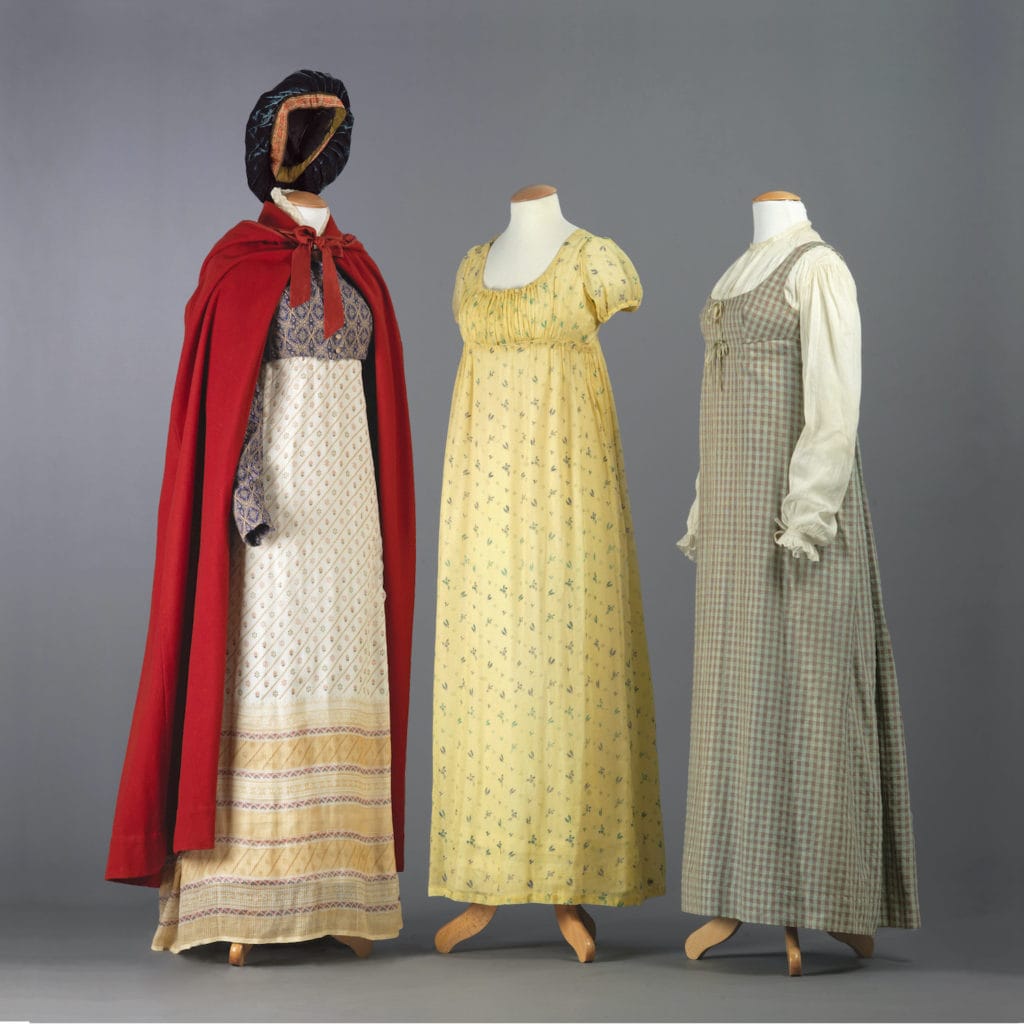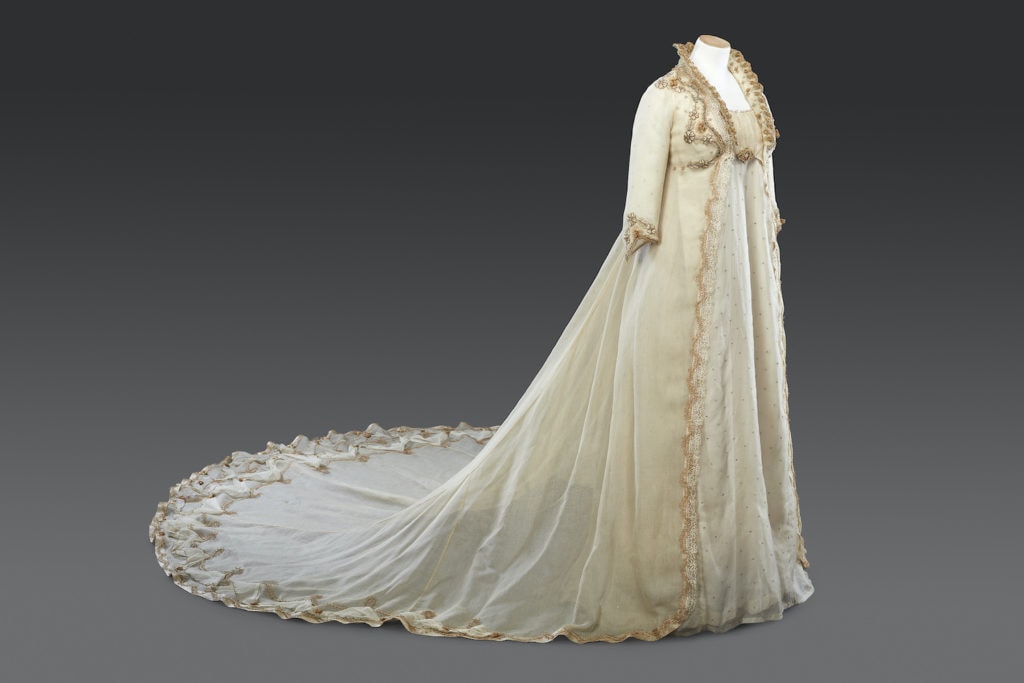A Time for Fashion & Sensibility
There is always something so special about seeing a fashion exhibit at the Taft Museum of Art. Perhaps it’s the magical quality of the original home’s history-filled halls in which the permanent collection lives. Maybe it’s the quaint tea area and gift shop that welcome you as you walk up the carpeted stairs to the exhibit space. Or, quite simply, it could be the knowledge that the curators at the Taft always bring interesting, and thought-provoking, pieces of fashion history to its patrons. Over the years, it has carved out its own voice within the fashion museum landscape – especially within the fashion in film genre.

“Jane Austen: Fashion & Sensibility” carried on this tradition well. It’s important before we begin to note that the exhibit showcases the fashion from the tv shows and movies that brought Miss Austen’s stories to life. It’s an interesting lens in which to view clothing from the Regency era, as an interpretation by modern costume designers who wish to maintain historical accuracy. The costumes overall are not a “Reign”-interpretation of historical accuracy (the modern Mary, Queen of Scots tale known for its laughable accuracy of the late Tudor era), they respect the time period and showed well how those of the upper class dressed.
“Through the context of these novels, their screen adaptations, and broader Regency-era history, the costumes reveal powerful themes of class, gender and social dynamics in Austen’s world.” – From the “Jane Austen: Fashion & Sensibility” opening statement at the beginning of the exhibit.

Upon entering the main exhibit era, after reading a brief introduction, you jump straight into the costume review with pieces from “Pride & Prejudice.” This story looks at the dynamic of the upper classes living amongst each other in the English countryside, thus the styles shown were more elevated country-fare with some practicality built in. From Miss Lydia Bennet’s red wool cloak from Mr. Fitzwilliam Darcy’s less formal cotton coat, and many places in between.

The costumes from “Pride & Prejudice” were placed on both sides of the aisle which, although allowed for a great number of looks to be shown, did cause of a bit of confusion in terms of the traffic-flow of the room. It was intriguing to see the same characters from Miss Austen’s novels shown through costumes from different screen adaptations. Sometimes you were looking at a costume from the mini-series, while other times it was the look from the more recent feature film. The differences in directors, costume designers, and even when the filming took place, all opened the pieces to further interpretation and interest.
Next up … “Sense and Sensibility.” This follows the lives of Dashwood sisters and their journeys to find love and financial security in one mate – a prospect nearly every woman of the era faced. The sisters’ costumes shown were more modest in nature – given their present circumstances – which contrasted nicely with the very over-the-top acidic green dress of Mrs. Fanny Dashwood. The former already being married, and living comfortably, the dress was definitely a power move.
After a brief interlude about the significance of the Regency period (named for the era when the British realm was governed by the regent Prince of Wales) and Regency style (a marked step in the liberation of women’s fashion with slightly higher hemlines and looser corsets), we head to Mansfield Park. In another look at the role of wealth in society, this story’s main character is of a modest background and her clothes reflected the difference of status from her counterparts. Miss Fanny Price wears a simple, and frankly unfashionable, linen riding look, while Miss Mary Crawford tries to stop the show in red wool.
In a small corner of the exhibit sits an invitation to write a letter – like those in the Regency period did – and then the main exhibit ends with looks from “Emma”. The highlight of which was Miss Emma Woodhouse’s simple – yet very memorable, wedding gown. This may be one of the most well-known of Miss Austen’s on-screen fashions. And it did not disappoint to see its elegance in person.
Very wisely, the curators at the Taft usually place additional pieces from the exhibit within the main house. So, once you finish viewing the last pieces from “Emma,” you can head out the door and down the hallway to see more.
“To be fond of dancing was a certain step towards falling in love.” A whimsical phrase from “Pride and Prejudice” – one of many from Miss Austen lining the hallway leading patrons from the main exhibit space to the Taft house.
To accompany the first set of pieces set in this lavish family home, the map room – featuring a wall-size map of England’s capital city by John Rocque and John Pine – was customized specifically for the most memorable London spots from Miss Austen’s life and works. You can see everything from John and Fanny Dashwood’s London residence to Jane’s favorite tea shop, Twinnings, at 216 The Strand. Having seen the map room before, it was an inventive way to incorporate the theme and allowed for seeing the map in a whole new way (“Jane Austen in London”).
Incorporating pieces from the exhibit among the grand rooms of the Taft family home subtly encourages patrons to visit the rest of the main house, viewing its permanent collection along the way. And for this Jane Austen exhibit, plus many of its past fashion-focused shows, it also allows you to feel and remember that these were living pieces of art represented how people went about their daily lives. Miss Marianne Dashwood’s evening gown from “Sense and Sensibility” worn in London was thoughtfully placed in the London map room. Lady Catherine de Bourgh’s vintage for the time period silk gown from “Pride & Prejudice” found a home in the Portraits & Prosperity room, alongside “art that displays status and wealth.” And the elegantly majestic Music Room held court for wedding wear from two separate such occasions: Miss Marianne Dashwood’s marriage to Colonel Brandon from “Sense and Sensibility” and Miss Elizabeth Bennet’s marriage to Mr. Fitzwilliam Darcy from “Pride & Prejudice.” Interestingly, both of the brides’ dresses were noted as being new given the wealth of their future husbands. This aligns closely with the practices with the higher class that Jane Austen focused her writings on. From those whose families were of a more modest financial background, the bride usually just wore her best dress (from her current wardrobe selection) instead of having a new piece made.

While certainly an added bonus, patrons do not need to be lovers of Jane Austen’s works to enjoy and appreciate this exhibit. Although, fair warning, if you don’t enter as a great admirer of Jane Austen, you may in fact leave as one. The curators did an excellent job of providing enough context to each on screen adaption to understand the story and how the piece on display held a place within the tale.
For those looking for more historical information about dressing for the Regency period, there were several More to the Story sidebars peppered throughout the exhibit to, as the name suggests, provide additional historical context about the fashion of the period. One can learn the difference between a chemise and a petticoat. Or the rise of the use of muslin, “a sheer cotton fabric made by hand in India.”
Overall, it was fascinating to understand more about the choices behind each piece – and what the color, fabric and trimmings were meant to reflect without saying a word. In the Regency era, as in many eras of the past, women were more seen than heard. So their fashion choices (or lack there of) were a reflection of them, their status and the statements they wanted to make.
With social media so prevalent these days, is anything ever really unsaid in 2022? It makes one think about the messages we put out there through our choices now, and ask if these subtleties are an artform lost to the modern era.
Jenny Perusek